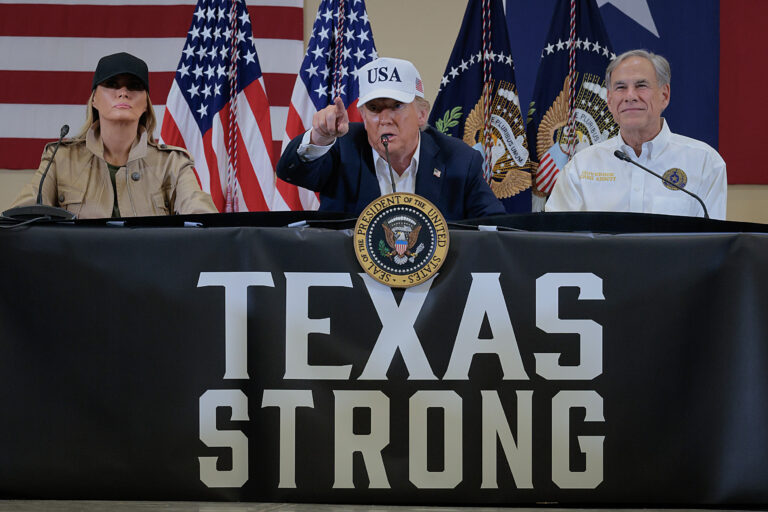The time it has taken for U.S. presidents to declare natural disasters and provide federal funding has dramatically increased in recent decades, with the Trump administration’s response time being more than four times longer than it was 25 years ago, according to the Associated Press.
Newsweek reached out to the Federal Emergency Management Agency (FEMA) via email for comment.
Why It Matters
FEMA is an agency that leads the federal response to natural disasters, coordinating with state and local governments and providing assistance to individuals, families, and businesses affected by events such as floods, hurricanes, and wildfires.
Delayed federal disaster declarations can constrain local and state recovery efforts by postponing access to federal financial assistance, search-and-rescue deployments, and mitigation funds that reduce future risk. Money is traditionally allocated to communities seeking a range of resources to mitigate the exacerbated strain following severe weather events and other emergencies.

Chip Somodevilla/Getty Images
What To Know
Since taking office for his second term, President Donald Trump has called for FEMA to be “terminated” and “remade” due to being “slow and totally ineffective.” His remarks have been tied to his administration’s early efforts to eradicate “waste, fraud and abuse” through the Department of Government Efficiency, for example.
An Associated Press investigation found that in 2000, it took an average of eight days for the U.S. president to approve federal disaster aid. That jumped to an average of 34 days during Trump’s current term.
Following deadly storms in Mississippi in March of this year, FEMA aid was provided 50 days after the event, according to the AP.
PBS NewsHour identified specific instances in which FEMA approvals lagged.
One involved a tornado that struck St. Louis on May 16. A formal federal declaration did not arrive until June 9, effectively prolonging the period in which local authorities covered immediate recovery costs.
The Trump administration’s pursuit of significant changes to FEMA included a proposed reallocation of roughly $4 billion in disaster-prevention and mitigation funds, a proposal that a federal judge temporarily blocked, as reported by PBS NewsHour in August.
In other cases under the Trump administration, FEMA did not approve requests for mitigation funding, which would have provided communities with assistance before disasters struck. Post-disasters, some of those same communities experienced delays in search-and-rescue missions.
What People Are Saying
White House spokesperson Abigail Jackson told Newsweek in July: “The President’s FEMA Review Council, comprised of top experts in their field, will recommend to the President how FEMA may be reformed in ways that best serve the national interest, including how America responds to and recovers from disasters such that the Federal role remains supplemental and appropriate to the scale of disaster.”
Sarah Labowitz, a senior fellow at the Carnegie Endowment for International Peace, told PBS NewsHour in August: “One of the benefits of FEMA is that it’s got a nationwide disaster force that can deploy. And it makes up to deploy those resources along with the pace as disasters happen. And when you wait to approve them all at once, that means that those forces have to deploy all together to a large number of places. So there’s some real downsides to the way the administration is bunching these requests.
Mississippi tornado survivor Dana Grimes told the AP: “It was horrible, we couldn’t figure out why the president took so long to help people in this country. I lost my house, my truck my garage. Now we just have to wait on FEMA. They said I should hear something between September 1 and September 30. So, it’s slow.”
What Happens Next
In July, following floods in Texas that killed at least 120 children and adults, Department of Homeland Security Secretary Kristi Noem said that Trump changed his position when it comes to terminating FEMA.


